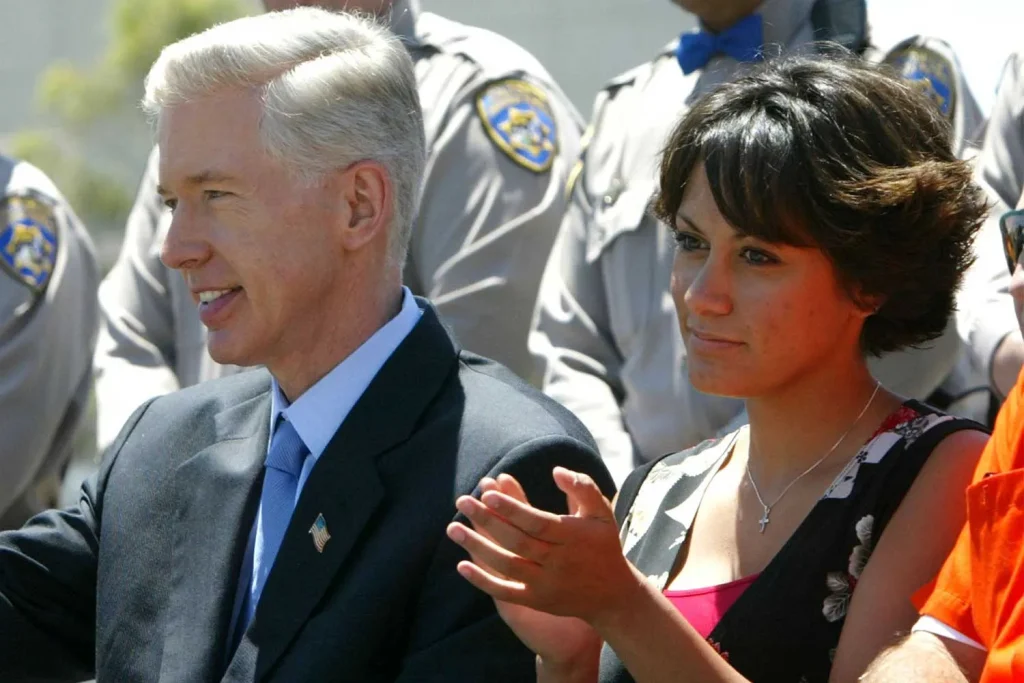How Two California High School Girls Turned Terror Into Triumph After Being Abducted for 12 Hours
In the early hours of August 1, 2002, two California teenagers endured a night of unimaginable fear — and showed the world what courage looks like. Sixteen-year-old Tamara Brooks and seventeen-year-old Jacque Marris were strangers living just miles apart in the small desert community of Lancaster, California. Within hours, they would be bound, terrorized, and forced into a fight for their lives — a fight they ultimately won by relying on instinct, intelligence, and each other.

The night began like any other for Brooks. She and her friend, 18-year-old Eric Brown, were parked at a popular local hangout spot when a car pulled up beside them. A man stepped out, flashing what appeared to be a police badge. He identified himself as an officer, but his demeanor and weapon told a different story. The man was 37-year-old Roy Ratliff, a fugitive with a violent past and an outstanding rape warrant. Within moments, Ratliff tied Eric up with duct tape, kidnapped Tamara at gunpoint, and disappeared into the darkness.
Around the same time, a few miles away, Jacque Marris was with her boyfriend, Frank Melero, in another quiet area when the same man approached their car. The pattern repeated: Ratliff ordered them out, bound Melero, and abducted Marris. Two girls from different backgrounds, both high school students, suddenly found themselves trapped in the back of a stolen Ford Bronco — together, bound by tape and fear.

According to later reports and interviews, the two teens quickly realized that their only chance of survival was cooperation. They could barely see each other in the dim light, but they managed to communicate silently — by tracing letters onto each other’s hands. Their first exchange was simple yet chilling: “What do we do?” “We fight.”
Ratliff, who was drinking heavily, drove them across miles of desert roads. The teens noticed a hunting knife and several bottles in the car’s console, objects that would later become part of their escape plan. Though terrified, they began strategizing in whispers whenever Ratliff dozed off. “We never cried,” Marris would later tell reporters. “We couldn’t afford to.”
After nearly 12 hours of captivity, their captor began to lose control — slurring words, threatening them, and veering off the road. It was during one of those moments that the girls made their move. Marris grabbed the knife, Brooks smashed a bottle across Ratliff’s head, and the two tried to wrestle free. Ratliff fought back, firing a shot into the air. The struggle left the Bronco swerving down a Kern County road.

By dawn, law enforcement had already been alerted to the kidnapping after Brooks’s friend, Eric Brown, and Marris’s boyfriend, Frank Melero, escaped and reported what had happened. Police tracked the Bronco through the desert, closing in as Ratliff attempted to flee with the two girls still in the vehicle. The confrontation ended violently. Ratliff was shot and killed by police after refusing to surrender, bringing an end to the girls’ night of terror.
Both Brooks and Marris were rescued physically unharmed but emotionally shaken. They had endured more than 12 hours of psychological warfare — isolated, threatened, and unsure if they’d live to see the morning. In the aftermath, their resilience drew national attention. Within days, they spoke with People and ABC News, recounting their experience not as victims but as survivors. Their courage and composure stunned investigators and reporters alike.
“We didn’t let him see us break,” Brooks said. “We looked at each other and knew — if one of us gives up, we both die. So we didn’t.”
Marris echoed her friend’s words. “I think he expected us to panic. We didn’t. We just kept thinking of ways to fight.” The two teens, once total strangers, became bound by an unspoken understanding: survival depended on unity. They would later describe their bond as “sisterhood born out of fear.”

For the officers who responded that night, the case remains unforgettable. Detective Paul Carter of the Kern County Sheriff’s Office later said that the girls’ bravery and presence of mind were “beyond remarkable.” He added, “They saved themselves as much as we saved them.”
In the months that followed, Brooks and Marris each faced the long process of recovery. They attended counseling, worked with trauma specialists, and relied on their families for support. Their story sparked national discussions about teenage safety, self-defense, and the rising awareness of abduction cases during the early 2000s. The same summer saw other high-profile kidnappings across the U.S., and the Brooks-Marris case became a symbol of hope — proof that survival was possible even in the darkest circumstances.
Tamara Brooks, a thoughtful and soft-spoken teen, later told reporters that faith played a role in her endurance. “I prayed the whole time,” she said. “I prayed for strength, for calm. I just wanted to go home.” Marris, by contrast, said her focus was pure determination. “I wanted to live. I wasn’t going to let him win.”

The phrase that defined their story — “We never cried” — came to represent more than composure. It became a declaration of strength. The two girls chose not to show fear, not to give Ratliff the satisfaction of control. That decision, they later said, kept them mentally strong even when the situation felt hopeless.
Years later, their paths diverged but their bond remained. Both women built quiet lives away from the public eye, but their courage continued to inspire survivors and advocates alike. For those who followed their case, the legacy of their bravery endures: the image of two terrified teenagers, communicating through hand signals, turning a nightmare into an escape story the nation would never forget.
The 2002 abduction of Tamara Brooks and Jacque Marris stands as one of California’s most dramatic examples of survival through unity. The girls’ instincts and calmness under pressure not only saved their lives but reshaped how authorities approach abduction response and trauma care for young victims. Law enforcement later credited their presence of mind for delaying Ratliff’s violent impulses long enough for police to intervene.
Today, their story is remembered not for the violence that began it, but for the bravery that ended it. Two girls — strangers just hours before — outsmarted and outlasted a dangerous criminal through nothing more than courage, communication, and trust. Their story has since been retold in documentaries, news features, and survivor panels, where it continues to inspire young people facing fear or adversity.
In a world that often glorifies tragedy, Tamara Brooks and Jacque Marris offer something different: a story of resistance and resilience. They remind us that even in the darkest corners of fear, courage can flicker — and that sometimes, survival depends on believing in the person beside you, even when you’ve only just met.


